Abstract
Pigeons were tested in a search task on the surface of a monitor on which their responses were registered by a touch-sensitive device. A graphic landmark array was presented consisting of a square outline (the frame) and a colored “landmark.” The unmarked goal, pecks at which produced reward, was located near the center of one edge of the frame, and the landmark was near it. The entire array was displaced without rotation on the monitor from trial to trial. On occasional no-reward tests, the following manipulations were made to the landmark array: (a) either the frame or the landmark was removed; (2) either one edge of the frame or the landmark was shifted; and (3) two landmarks were presented with or without the frame present. On these two-landmark tests, the frame, when present, defined which was the “correct” landmark. When the frame was absent, the “correct” landmark was arbitrarily determined. Results showed that pecks of 2 pigeons were controlled almost solely by the landmark, pecks of 3 were controlled primarily by the landmark but the frame could distinguish the correct landmark, and 1 bird's behavior was controlled primarily by the frame. Stimulus control in this search task is thus selective and differs across individuals. Comparisons to other search tasks and to other stimulus control experiments are made.
Keywords: stimulus control, search, landmarks, spatial learning, attention, peck, pigeon
Full text
PDF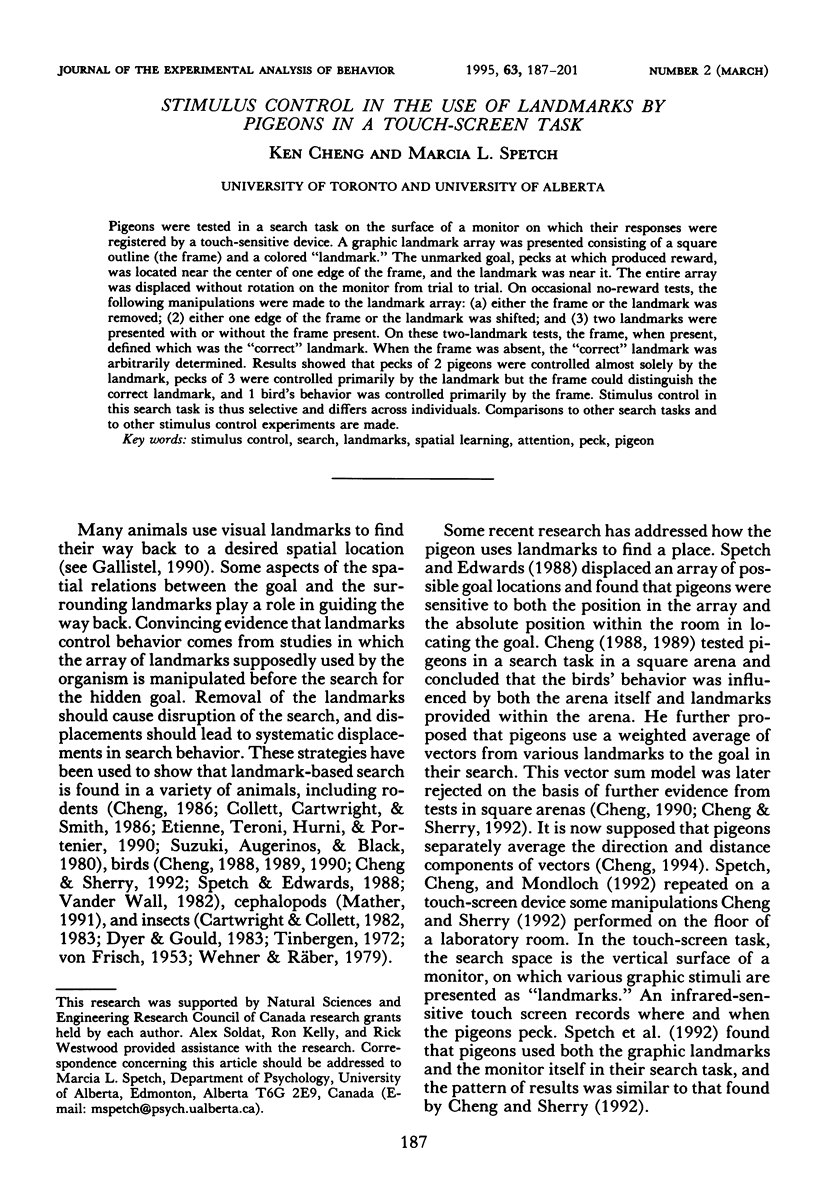

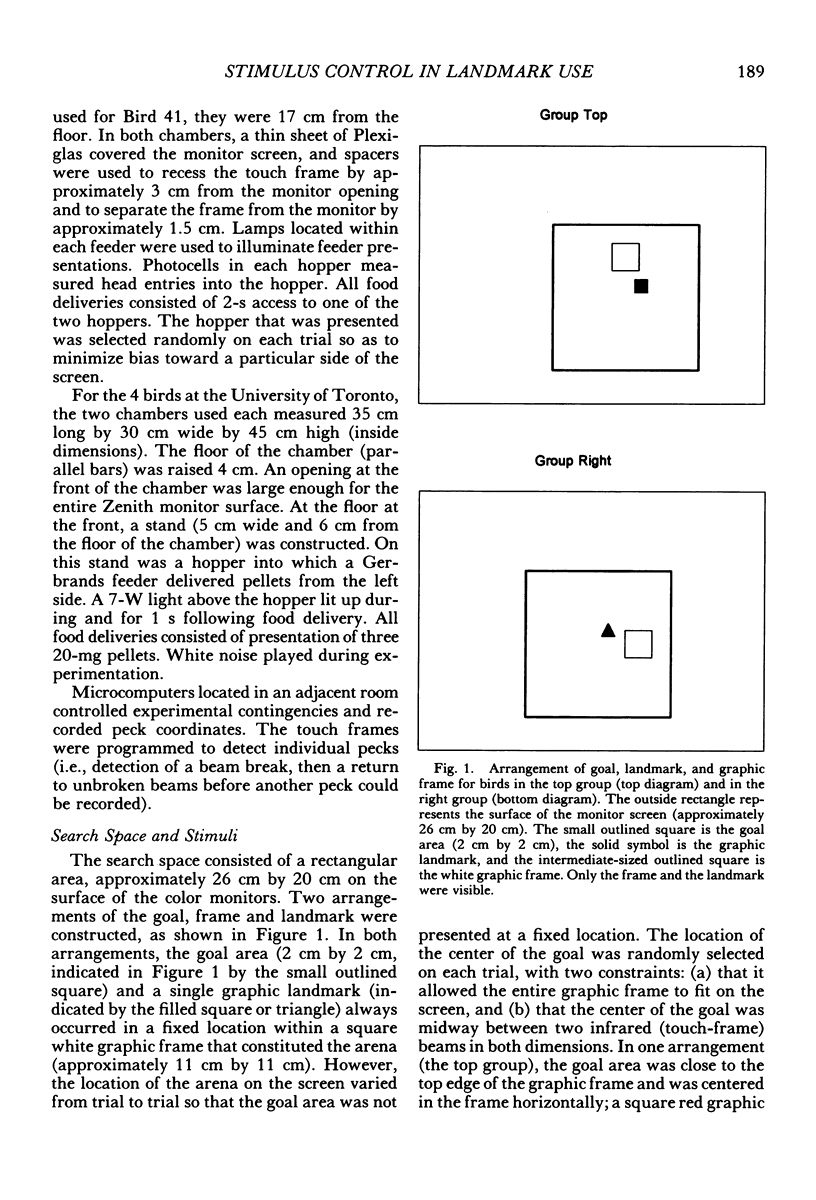
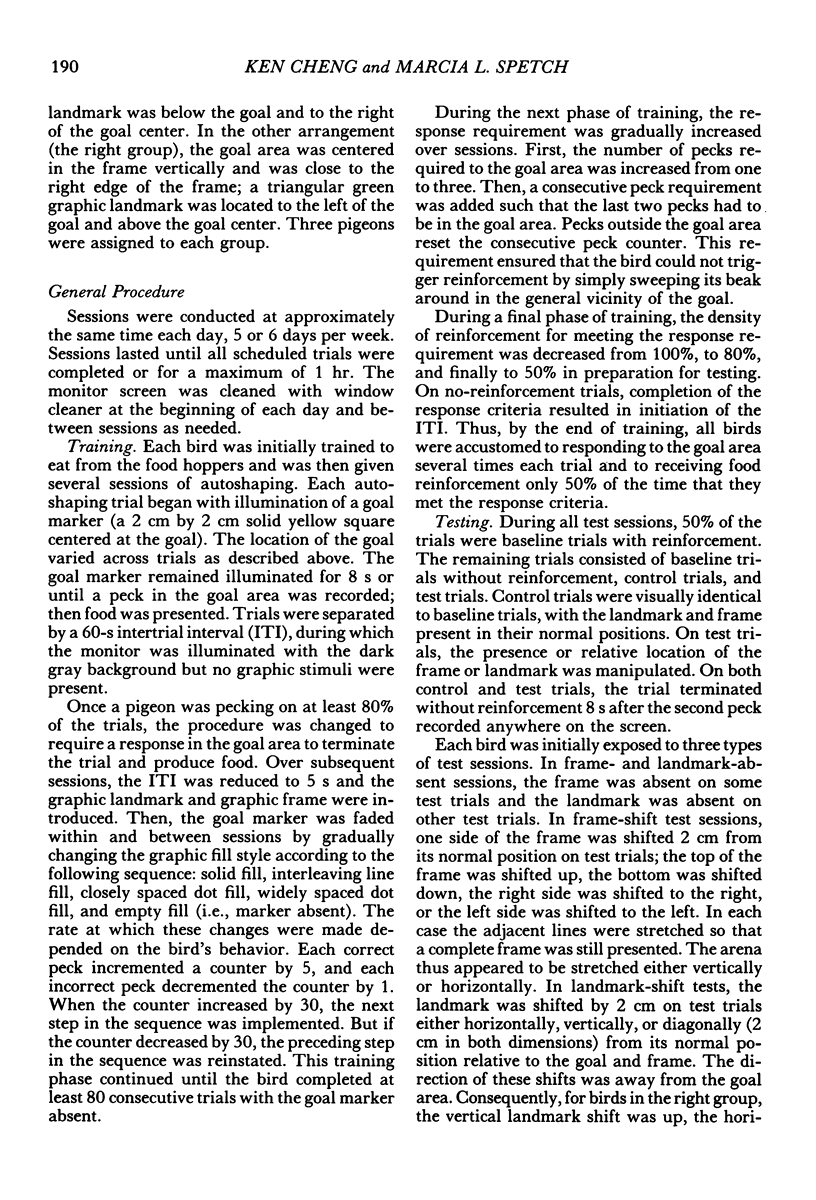
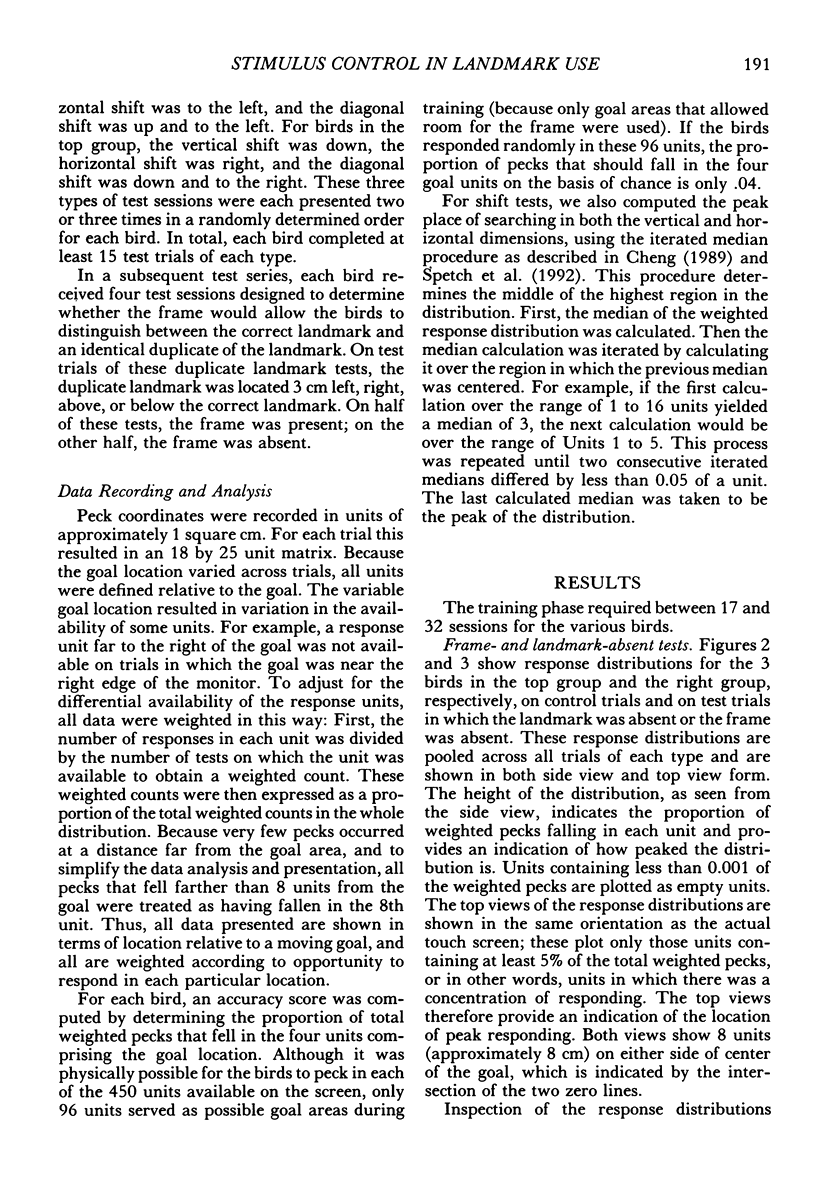
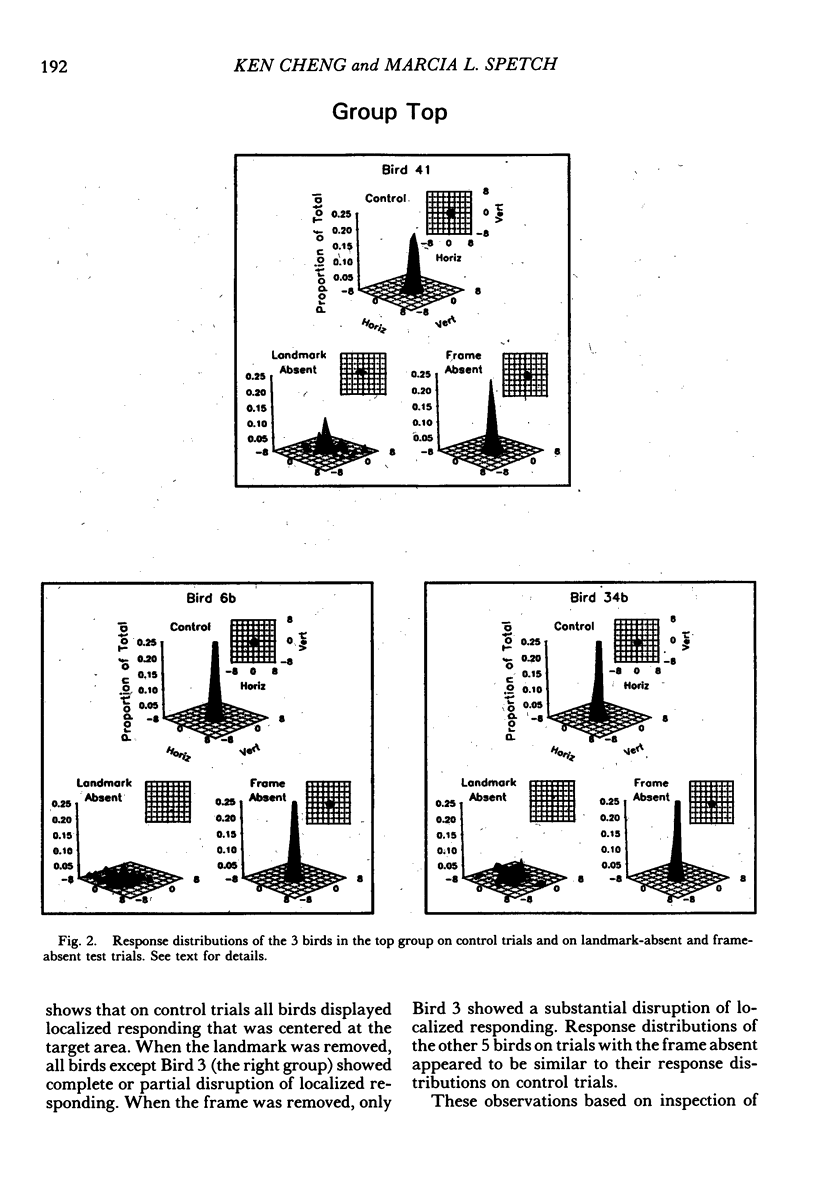
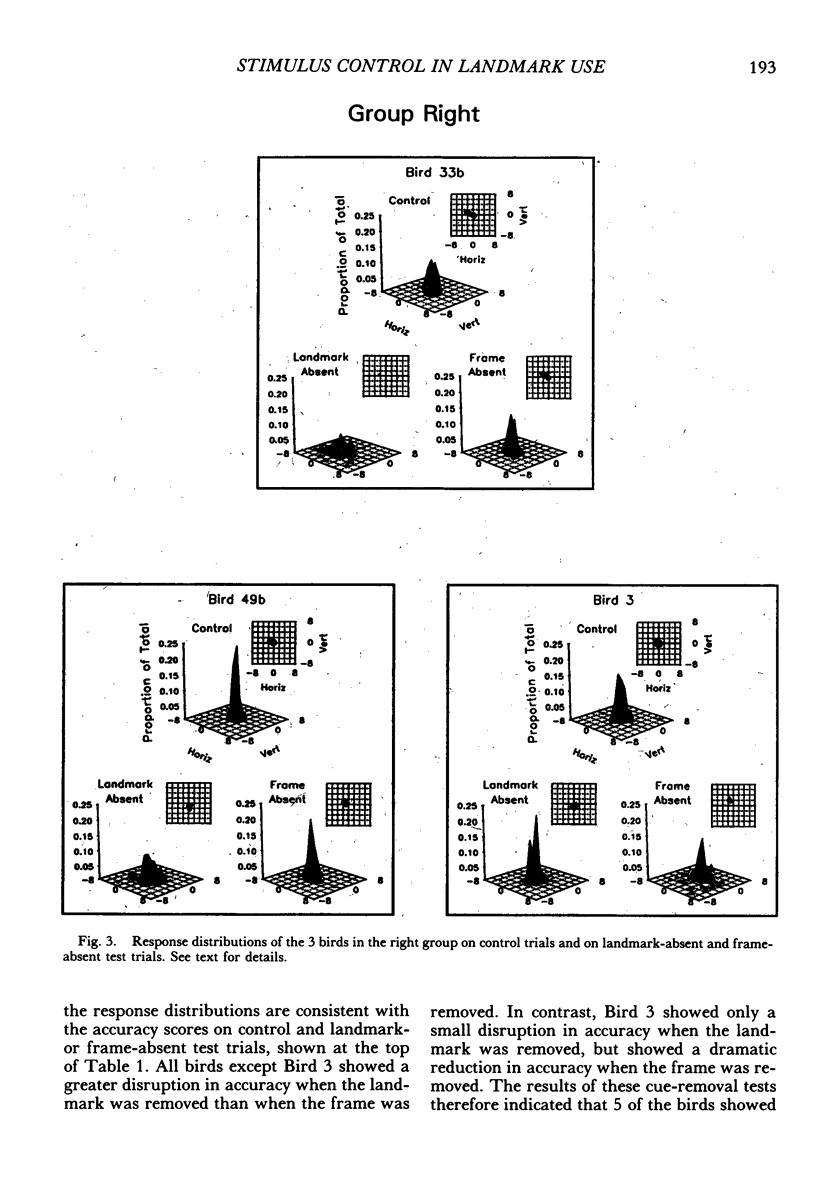
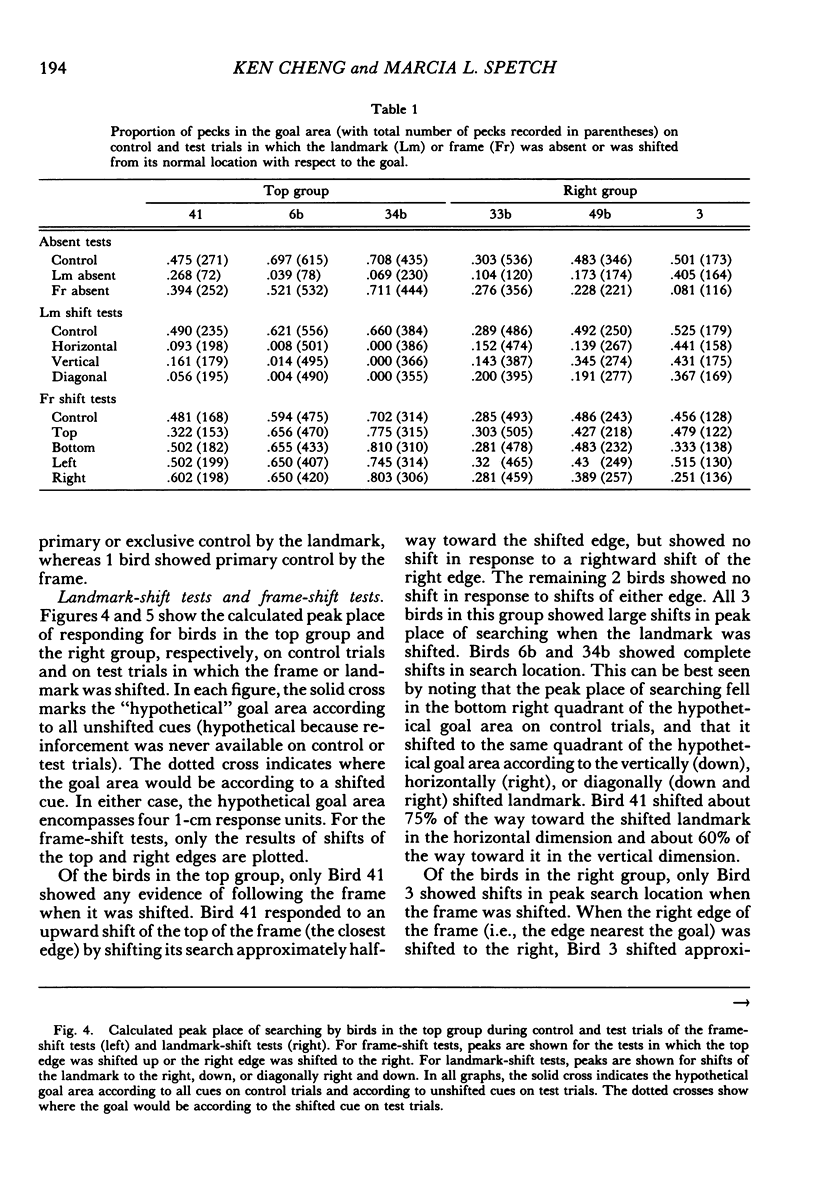
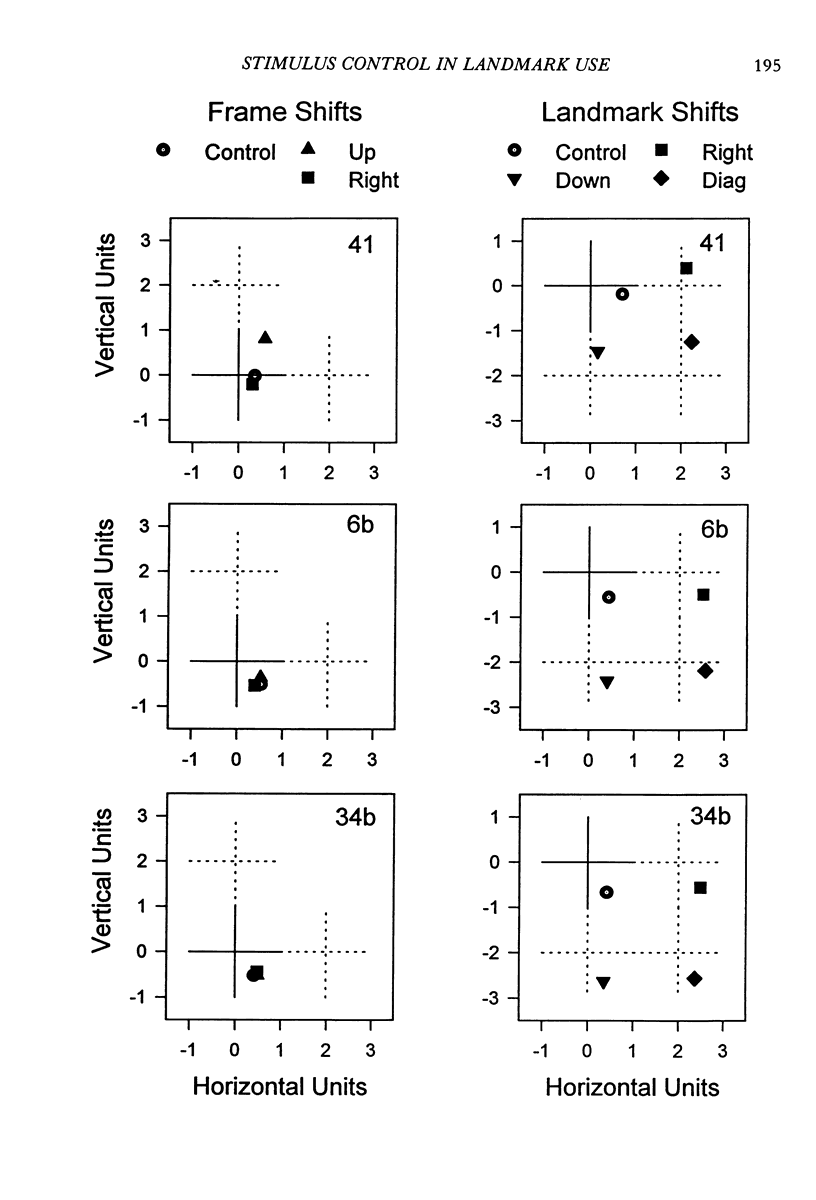
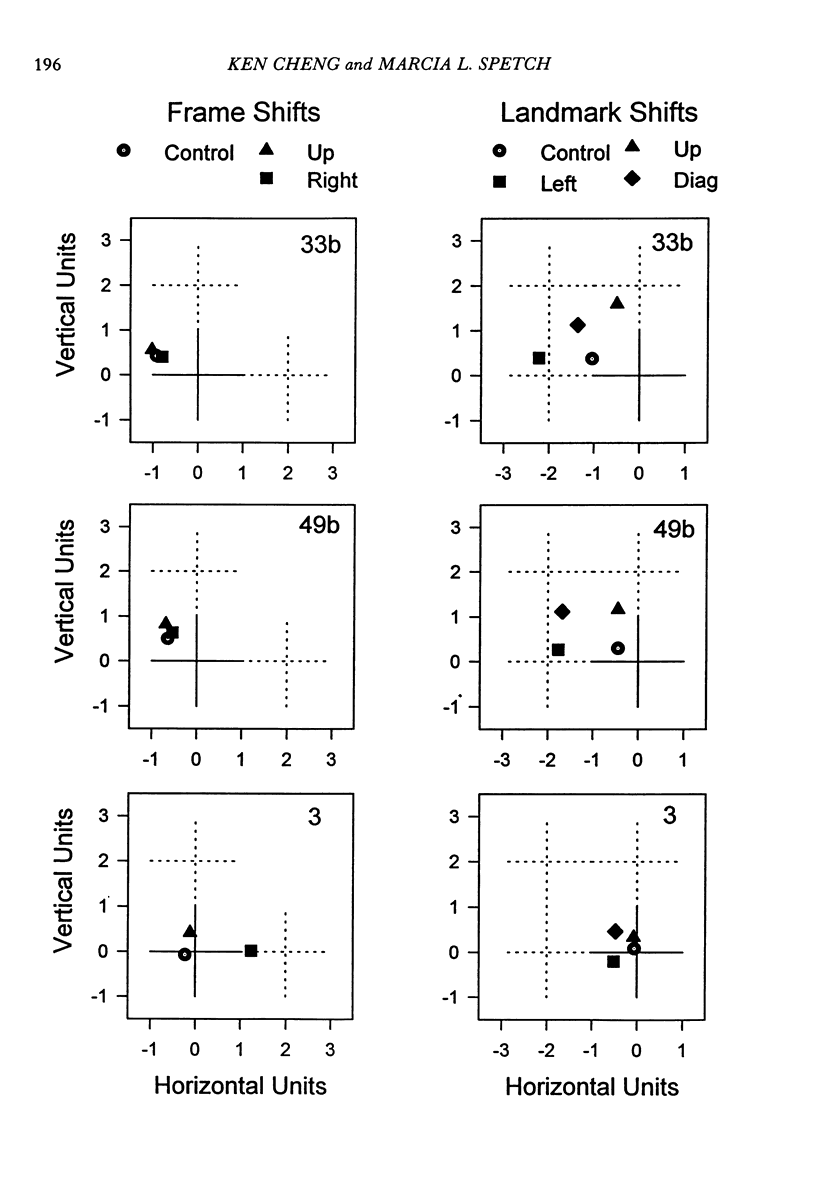
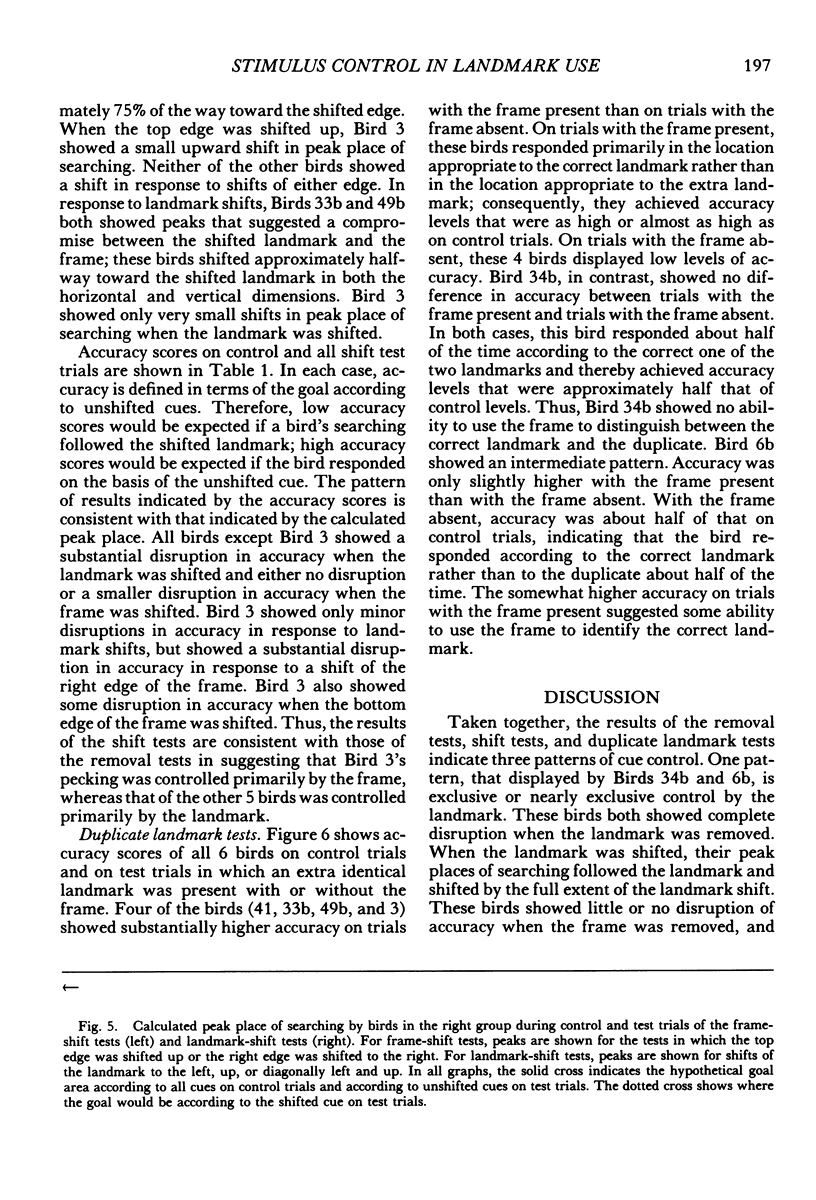
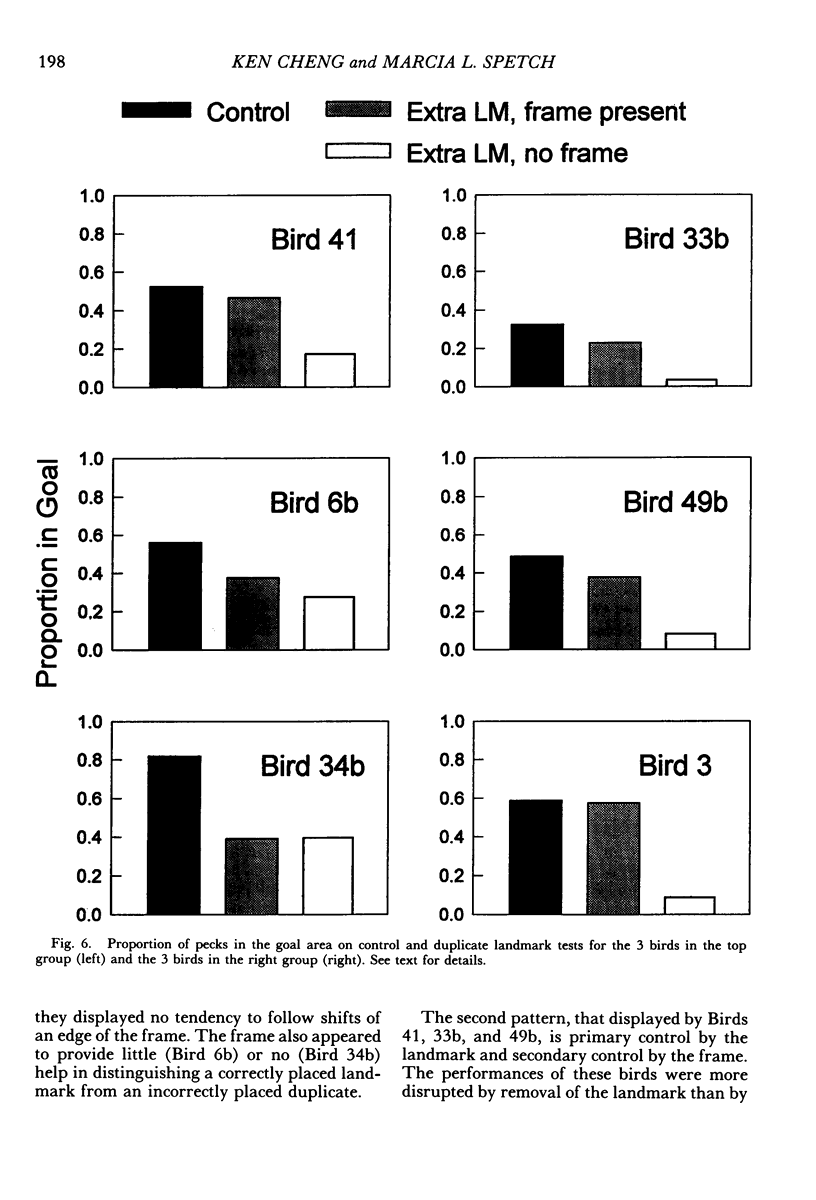
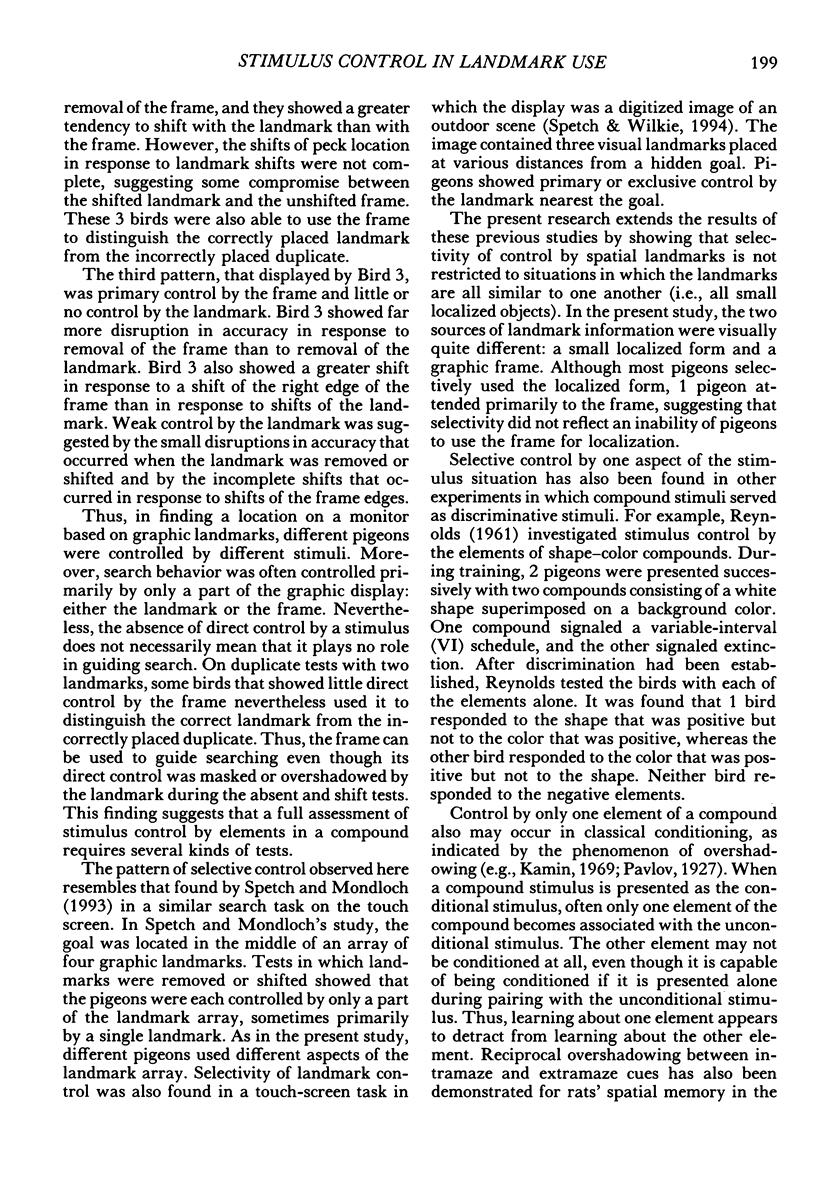

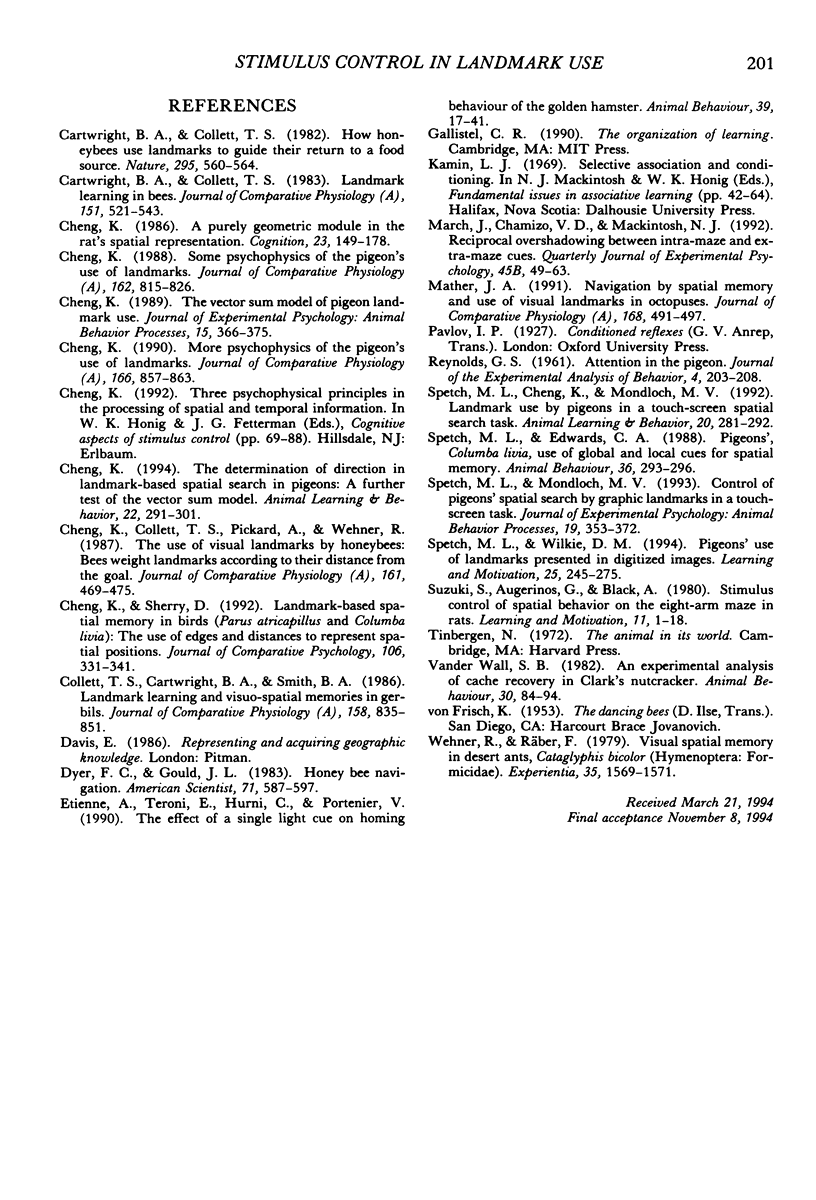
Selected References
These references are in PubMed. This may not be the complete list of references from this article.
- Cheng K. A purely geometric module in the rat's spatial representation. Cognition. 1986 Jul;23(2):149–178. doi: 10.1016/0010-0277(86)90041-7. [DOI] [PubMed] [Google Scholar]
- Cheng K. Some psychophysics of the pigeon's use of landmarks. J Comp Physiol A. 1988 Apr;162(6):815–826. doi: 10.1007/BF00610970. [DOI] [PubMed] [Google Scholar]
- Collett T. S., Cartwright B. A., Smith B. A. Landmark learning and visuo-spatial memories in gerbils. J Comp Physiol A. 1986 Jun;158(6):835–851. doi: 10.1007/BF01324825. [DOI] [PubMed] [Google Scholar]
- March J., Chamizo V. D., Mackintosh N. J. Reciprocal overshadowing between intra-maze and extra-maze cues. Q J Exp Psychol B. 1992 Jul;45(1):49–63. [PubMed] [Google Scholar]
- REYNOLDS G. S. Attention in the pigeon. J Exp Anal Behav. 1961 Jul;4:203–208. doi: 10.1901/jeab.1961.4-203. [DOI] [PMC free article] [PubMed] [Google Scholar]


